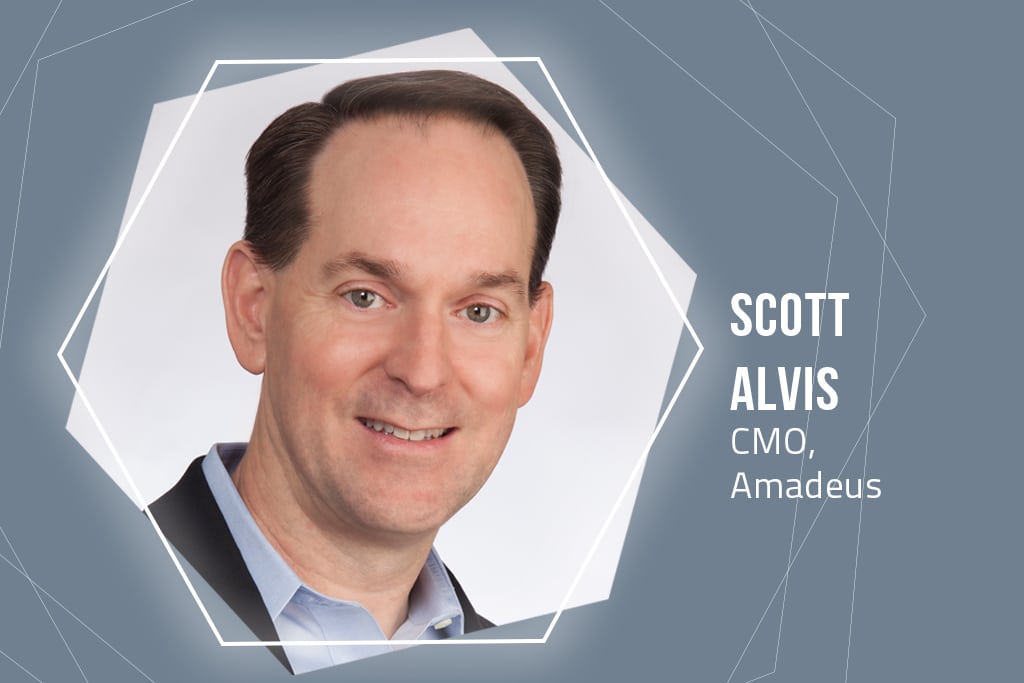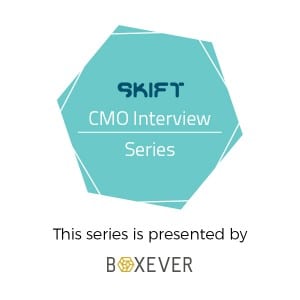Skift Take
Amadeus has taken a more diverse marketing approach than the other travel technology giants, experimenting on different social media channels that are usually used for consumer marketing.
Editor’s Note: Following our previous CEO interview series covering online travel, hospitality, and destinations, Skift has launched a new series, this time focused on Chief Marketing Officers.
To better understand the big marketing challenges facing travel brands in an age when consumers are in control, Skift’s What Keeps CMOs Up at Night will talk with the leading voices in global marketing from across all the industry’s sectors.
These interviews with leaders of hotels, airlines, tourism boards, digital players, agents, tour operators, and more will explore both shared and unique challenges they are facing, where they get insights, and how they best leverage digital insights to make smarter decisions.
For the companies that provide booking solutions and other technological connectivity to players in the travel industry, reaching and building relationships with industry decision makers is crucial.
Amadeus has experimented with a combination of events, social media outreach, and content marketing to reach those making the decisions about what kind of travel technology to use.
Scott Alvis, Amadeus North America‘s chief marketing officer, told Skift about the challenges of competing in a crowded market, how face-to-face events continue to drive the company’s business, and the considerations that big B2B companies like Amadeus have to make when looking to the future of branding and marketing.
An edited version of the discussion is below.
Skift: What are the top marketing challenges that keep you up at night?
Alvis: There’s so much going on that I think the expectations of the CMO and the marketing discipline role overall is evolving quickly. The number one thing that I think about is the prioritization of what matters. There’s so much going on, a lot of growth out there in the business, there’s a lot of models. Thinking about the customers and their evolution. Thinking about how concentrated the market is, our message, the product, and the channels we send messages out through. It’s all changing very rapidly.
The content marketing explosion over the last several years is real. There’s so many channels, so many key paths. Videos and all kinds of things that we can be producing and spending time on. The question is, what is really going to be meaningful to our customers and to their customers?
I need to make sure that we’re focused on spending time and energy on the right thing. Everybody has limited resources, so we’ve got to figure out what we’re going to focus on and why. That takes a lot of time and energy.
Skift: When it comes to all of that marketing output, what are the most crucial things you focus on as an organization?
Alvis: Like any marketing organization, we’re trying to make sure that we’re successful on a lot of fronts. We’re trying to make sure we understand the customers, and we’re there working closely with our commercial leads, trying to be successful. We work to make sure we’re acting our best in program segments we believe are going to be long-term winners in our space.
I’ve also got the product function here in North America, so we’re trying to make sure that the product pipeline is alive for customer building, and where the messages need to be. The North American market is extremely concentrated, as you may know. You look at the agencies out there, certainly the online space. Corporate space, leisure spaces. Over the last few years, the market has been extremely concentrated. Same thing’s true on the supplier side.
Skift: What’s tough about marketing in such a competitive B2B marketplace?
Alvis: It’s a concentrated market. There’s good and bad that comes with every concentrated market. The good thing is that you can dive in deep with customers and really understand the individual decision makers. You want a lot of clarity to focus your message.
The more difficult part, of course, is that there are so few players who control a lot of the market. You have to make sure sure that you are spot-on and what your depth of understanding of this customer is, opportunities, their challenges, aligning plans, understanding individuals. It’s what’s important in a concentrated B2B market like ours.
Skift: What about the challenge of using social media to reach the right people? Given the complexity and specificity of Amadeus’ products, it must be a challenge to distill your message for these platforms.
Alvis: This is kind of the nature of the social space, right? People don’t want to be lectured to about your offering, they want to understand the industry, they want to understand more of that thought leadership and challenges. They want an educational discussion, and through these channels at the very beginning of a purchase process. You’re not using those channels to effectively move people through the later stage decision process.
We want to make sure that we’ve got all that great storytelling out there, customer testimonials, all those parts and pieces out there so that, that is the benefit of the social channel, that you have the ability to publish that content really at a very good price point.
Skift: Given that the social media piece is more for the beginning of the sales process, how do you quantify the effect that online marketing has on Amadeus’ sales?
Alvis: Yeah, I think it’s more difficult in our space. You will see things like views, so you know that the content has been compelling enough for people to watch it, to click on it, and try to get them to a landing page where we can provide contact information. We’ve tried and been successful publishing white papers. Putting out a white paper out there than can be downloaded and [reader information is] collected, so I think that the measurement can be pretty good.
Skift: What happens when a particular campaign or strategy doesn’t work the way you intend? Are there social media channels you avoid?
Alvis: If it doesn’t work out, we’re trying to push out stuff all the time. Like I said, I think with a lot of the content marketing stuff working out through the social channels, you’re trying to create engagement. If your publishing content is kind of checking the box off, then there really isn’t much engagement.
I don’t think Snapchat’s on our list, but we are out there on Instagram, Pinterest, Twitter, Facebook, all those platforms. I would say about those, I don’t believe that marketing’s dead. I think if you want to be out there, if you want to get your brand out there, pushing its pieces, think about keeping people engaged. There’s still this very lofty hill of customers out there. The large customer, a lot of influencers and decision makers that we may not be reaching through other means.
Skift: So much marketing that Amadeus does is based around sponsoring events. What are the limitations of an approach like that?
Alvis: The focus being put on events, whether there are internal or external events, I think can be too much. Relationships are still really important, and face-to-face events are the best way to do that, so we continue to spend a good amount of our marketing on face-to-face events with our customers. It’s where you build the trust and the willingness to share information with the customers. You’ve got to find ways to build that trust and collaborate with customers.
I think our challenge is to make those channels meaningful. You’ve got to prepare; think of your audience and what they’re going to be interested in and then share something meaningful with them.
This series is presented by Boxever. The Skift content team maintains complete editorial control over these interviews and the selection of subjects.
For more insights from Boxever, please see the following reports:
The Daily Newsletter
Our daily coverage of the global travel industry. Written by editors and analysts from across Skift’s brands.
Have a confidential tip for Skift? Get in touch
Tags: amadeus, cmo series

